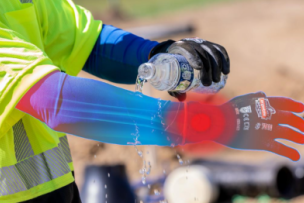MCR Safety has over forty years of experience as a leader in the field of personal protective equipment (PPE). Our assortment of offerings includes gloves, glasses, and garments which are made from the highest quality materials available to ensure maximum safety, comfort, and style.
In 2021, over 1 million single-unit houses were under construction in the United States, contributing 4.1% to the entire nation's GDP. In addition to these single-unit homes, many multi-family residential properties, office buildings, commercial spaces, and other buildings were also under construction or renovation. Each of these worksites creates construction jobs and new spaces for people to live and work.
Structures don't last forever, and there are countless buildings demolished each year as they become uninhabitable or are hit by natural disasters such as hurricanes and tornadoes. Whether new building construction or tearing down pre-existing buildings, debris is always a part of every site. This waste not only poses a potential threat for workers and passersby, but it also accumulates quickly, accounting for hundreds of millions of pounds of waste going into landfills each year.








Talk to Us!
Leave a reply
Your email address will not be published. Required fields are marked *